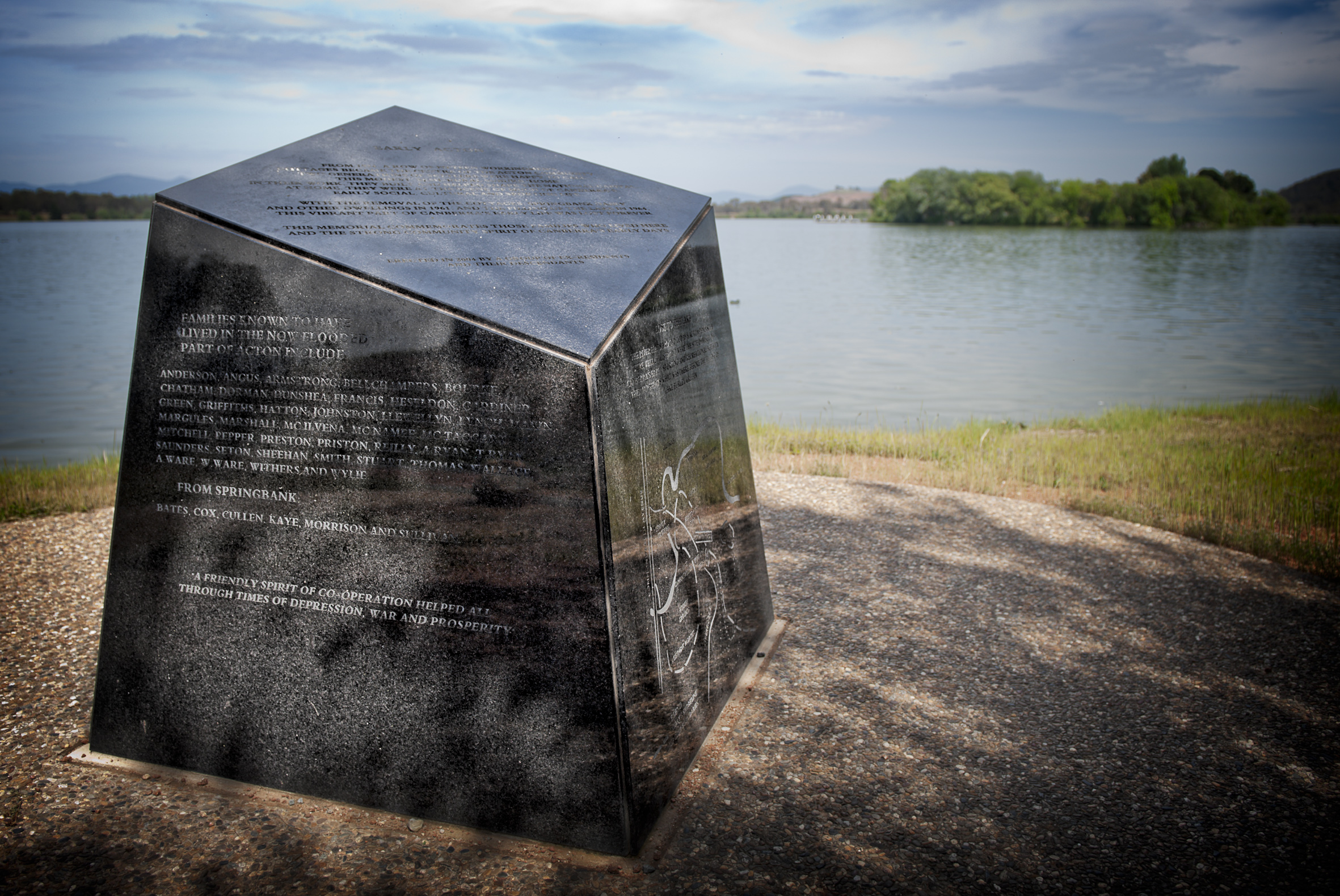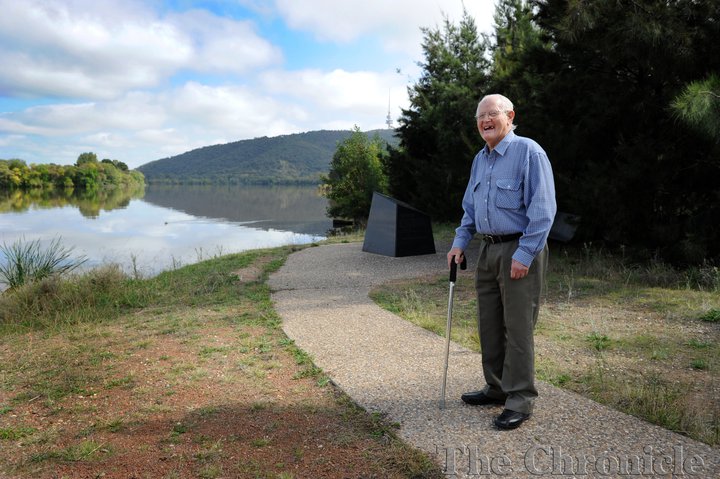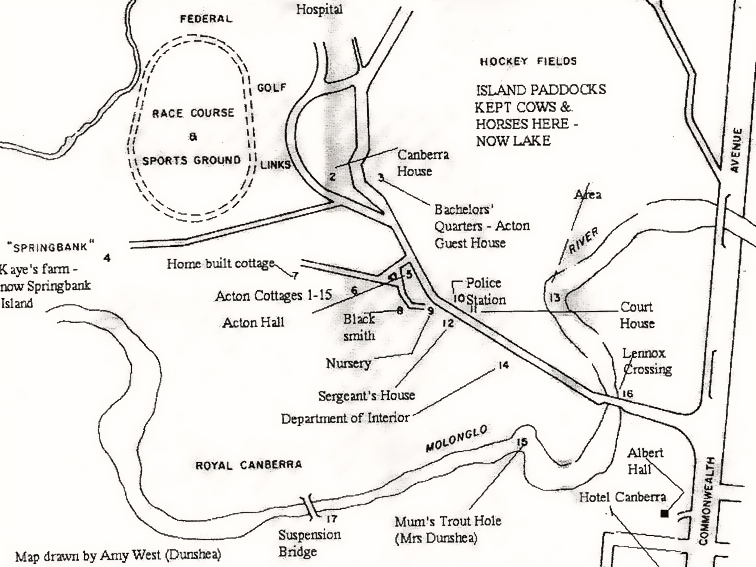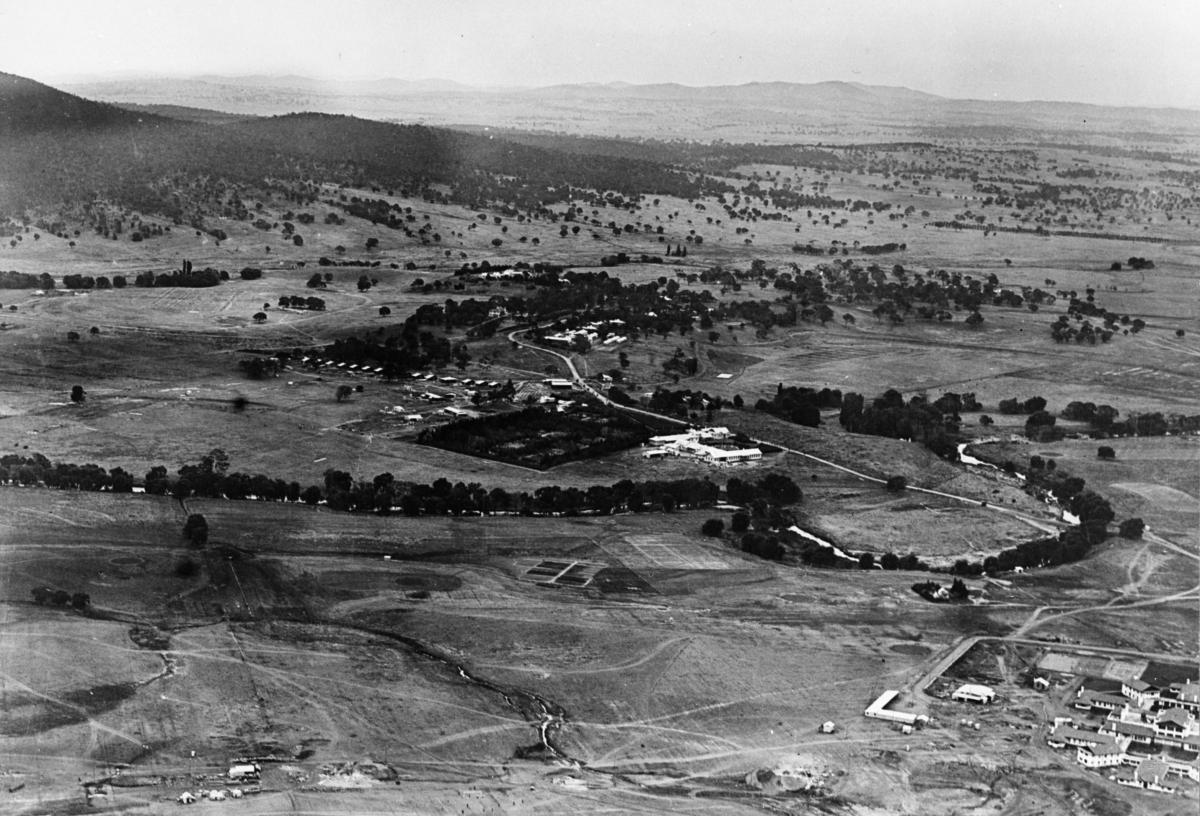Memorial to Old Acton
In 2004 a black marble monument was unveiled beside the Acton Peninsula wharf by former Senator Margaret Reid to commemorate the old suburb of Acton and its residents. Frank Dunshea was the chairman of the Acton Memorial Steering Committee, and his son Kevin the secretary. The following text, written by Frank and Kevin was included in the commemorative brochure handed out on the day. Their words eloquently sum up the rich heritage of the area and important role the residents played in the development of the Nation's Capital:
"For many thousands of years, Aboriginal peoples inhabited the mountain and tableland country around the Australian Capital Territory. The area around today's Acton peninsula lies at the geographical heart of the Kamberri people's territory and was called ‘Kamberra'.
During the 1820s, this area became part of two separate grazing properties, Canberry and Springbank. The name ‘Canberry' was chosen by the original leaseholder but a later owner re-named it ‘Acton' after a place in Wales. These properties were among the first land acquired by the Federal Government for the creation of the new Capital - Canberra.
Through the 1920s, as the population building the new city grew, tent settlements and shanties appeared along the Molonglo River. In 1924, the Federal Capital Commission erected a row of workingman's cottages at Acton - some of Canberra's earliest government houses. Those who moved in were immediately active in building tennis courts and a children's playground (which was very close to the new memorial site). From then on, the community generated a close and helpful spirit.
Much was to happen here over the next 40 years. Most of the nearby buildings now at the ANU, and the earlier Canberra Hospital, were built during this era. At this time, Acton was the administrative centre of Canberra. The Acton Hall was an important venue for the growing city, the scene of civic functions, dances, church services and meetings, with many local clubs and organisations being formed there.
The river flats were a place where Canberrans would come on the weekend. Two golf courses, the racetrack, sports fields, a riding school and a swimming hole all made Acton a key place of recreation for the district. The infield of the racecourse contained an oval sports ground and was the scene of events such as the Highland Games and Light Horse Brigade Gymkhanas. Children in the area could make pocket money by finding golf balls, caddying or selling race books, and they tended to grow up with a sporting nature. Acton fielded teams in Australian Rules and Rugby League football, as well as cricket and tennis.
The open space around the settlement included Springbank Dairy, agistment paddocks and the government nursery, giving it a distinctly rural character. This was valuable for families, especially through the Depression when garden plots, fruit trees, chickens and in some cases livestock provided a major source of household food. During the war years a number of Acton ‘boys' served overseas while the ‘girls' got jobs with the Public Service doing war work.
Families left and new ones moved in but the area retained its vibrant and unique nature until the early 1960s when all low-lying buildings were removed for the filling of the lake. This would be the end of an era for Canberra. At the heart of this was the loss of ‘old Acton'…."
Frank Dunshea sadly passed away in January 2014. A long-standing and enthusiastic advocate for old Acton, Frank was an early and ongoing inspiration for this project, for which we remain indebted. His son Kevin has generously provided Frank's detailed written memories of old Acton between the years of 1926-1946, excerpts of which we have added throughout the site. The complete version is viewable here in pdf.



